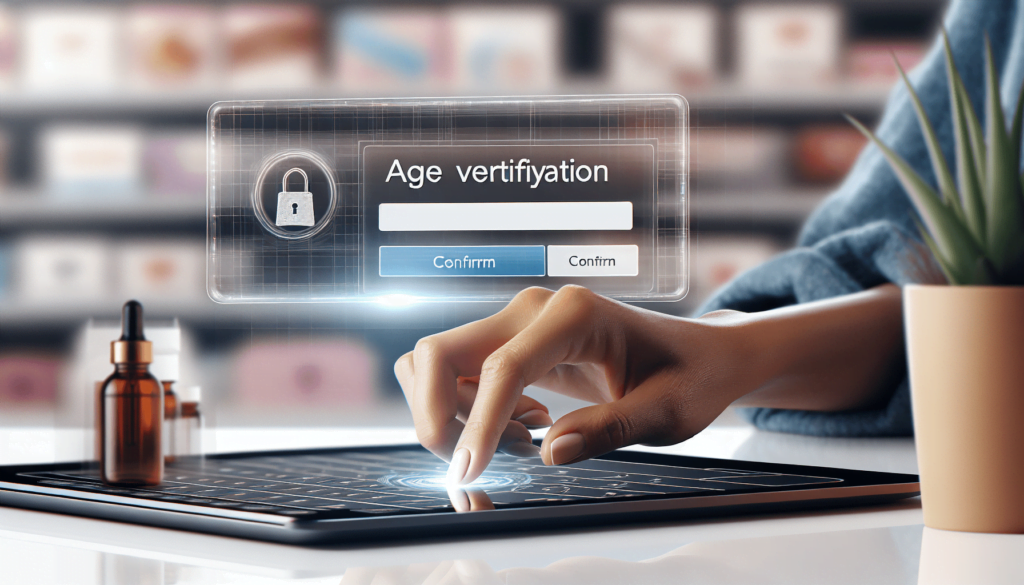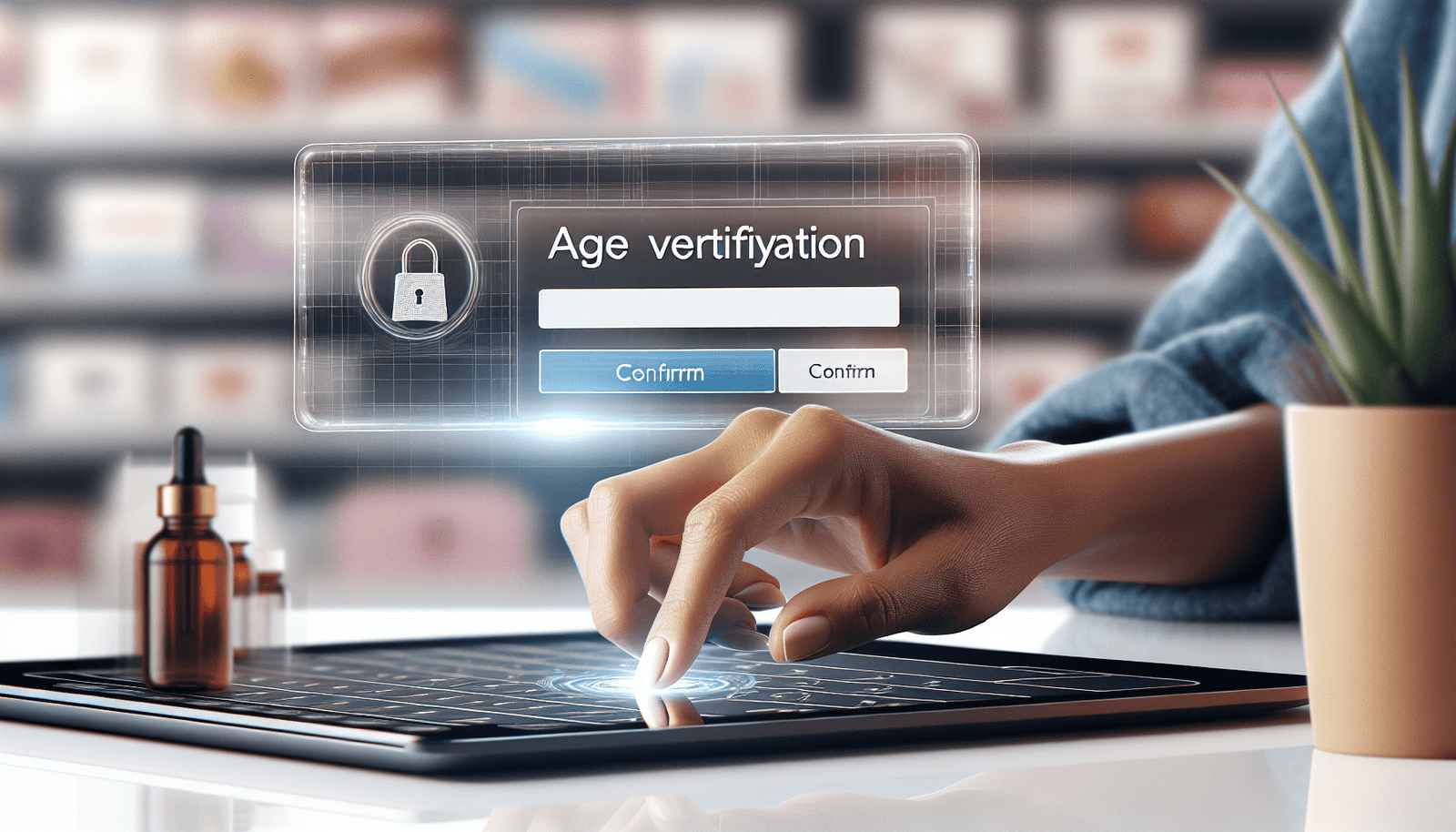Online Store Age Verification Requirements Checklist”
Navigating the world of e-commerce can be tricky, particularly when it comes to age verification for online stores. I remember the first time I encountered this issue while setting up my own shop. It felt like trying to solve a Rubik’s Cube blindfolded. But worry not! This article will walk you through a comprehensive checklist to ensure you’re not only compliant with legal requirements but also providing a safe shopping experience for your younger audience. From selecting the right age verification software to understanding the legal stipulations in different regions, we cover it all with a sprinkle of humor and a touch of personal experience to keep it engaging. So sit back, relax, and let’s dive into the essentials of age verification for your online store. Ever found yourself wondering why an online store needs to verify the age of its customers? If you’ve ever tried to buy a bottle of fancy scotch or a new vape pen online, you’ve probably been greeted with age verification prompts that feel like you’re trying to access classified government documents. But why? Well, today, grab your favorite beverage—juice or something else, depending on whether you passed that age gate—and sit back as I dive into the nitty-gritty of age verification requirements for online stores.

The Importance of Age Verification
Legal Requirements
First off, let’s chat about why it’s essential. Picture this: you’re a teenager who’s barely learned to drive, and you stumble upon an overly irresistible whiskey deal online. Without age verification, it’s a free-for-all! Putting the safety of minors and the reputation of the company at risk. Online stores are required by law to confirm the ages of their buyers, especially when selling age-restricted products like alcohol, tobacco, and certain video games.
Protecting Minors
It’s not all about dodging lawsuits either. Protecting young folks is at the heart of these regulations. Imagine your little cousin ordering an R-rated movie or even something more extreme simply because they clicked a button that said, “Yes, I’m over 18.” Horrifying! Online while a tad more convenient than hopping to the local store must have safeguards in place.
How Online Stores Verify Age
Self-Certification
One of the simplest ways? Self-certification. It’s just a fancy term for those pop-ups that ask you if you’re of age. You click “yes” or “no,” and boom, you’re done. Now, while this method is about as foolproof as trusting a toddler to guard cookies, it counts as a form of compliance.
Electronic Age Verification
Electronic verification, on the other hand, is where things get a bit techy. Here, the store uses third-party services to cross-check your information against various databases. Think of it as the online equivalent of showing your ID to a skeptical bouncer. These systems can verify your age based on details like your name, address, and of course, your date of birth.
Manual Verification
Manual verification? That’s the old-school route. You submit a scanned copy of your ID for an actual human being to review. Yes, there are still real humans involved in online processes! This method is thorough, but it can delay your order, which can be a real bummer if you’re impatiently waiting for that movie night to start.
The Detailed Checklist
Include Clear Notices
The first step is to make it glaringly obvious—like neon-sign-in-the-middle-of-nowhere obvious—that the buyer needs to be a certain age to purchase specific items. Think bold texts, pop-ups that pause the buying process, and even pre-checkout gates.
Select an Age Verification Method
As we discussed, whether it’s self-certification for lower-risk products or electronic and manual verification for higher-risk ones, choosing the correct verification method that aligns with the legal needs of your product is key.
Self-Certification:
| Advantages | Disadvantages |
|---|---|
| Easy to implement | Easily bypassed |
| Quick for customers | Less secure |
Electronic Verification:
| Advantages | Disadvantages |
|---|---|
| More secure | May require additional setup |
| Quick verification process | Possibly costs more |
| Difficult to bypass for minors | Dependent on accuracy of databases |
Manual Verification:
| Advantages | Disadvantages |
|---|---|
| Highly secure | Time-consuming |
| Direct human verification | Can delay purchases |
Stay Compliant with Jurisdictional Laws
Ah, the ever-changing legal landscape. What a thrill, right? Make sure to stay updated on the laws specific to different jurisdictions. For instance, some states in the U.S. have stricter requirements for age verification for certain products compared to others. Yes, it’s tedious, but it’s better than a hefty fine.
Keep Records
It’s not just about verifying ages; it’s about proving you’ve done so. Maintain meticulous records—in a secure database, of course—of every customer interaction regarding age verification. This step might save your bacon if regulators come knocking.
Key Records to Keep:
- Time and Date of Purchase
- Verification Method Used
- Proof of Verification Success
- Customer Information (as allowed by privacy laws)
Privacy and Security Measures
Speaking of secure databases, you must adhere to data privacy laws like GDPR or CCPA. Store customer data in an encrypted format and ensure it’s accessible only on a need-to-know basis.
Privacy Compliance Steps:
- Data Encryption
- Limit Access
- Periodic Data Purging
- Clear Privacy Policies

User Experience & Age Verification
User-Friendly Interface
No one wants to navigate a digital labyrinth just to buy something. Design your age verification processes to be as user-friendly as possible. Use clear, concise instructions and minimize the number of steps required.
Transparency
Explain why you’re verifying ages. A small message about how you’re dedicated to protecting minors and complying with laws can go a long way in maintaining customer trust.
Overcoming Challenges in Age Verification
High Dropoff Rates
It’s a known fact; age gates can cause potential buyers to abandon their carts faster than you can say, “But wait, there’s more!” To combat this, optimize the user flow. Test various designs and approaches until you find the least disruptive method while still being compliant.
Handling International Orders
International orders add another layer of complexity. Different countries have different age restrictions. So, ensure your system can adapt to these international variances without turning your hair gray.
Tools and Technologies for Age Verification
Trusted Third-Party Services
Several third-party providers specialize in age verification solutions. Companies like Veratad, AgeChecked, and Jumio offer robust, reliable options. They can streamline the process, making it less of a hassle for both you and your customers.
API Integrations
Most age verification services offer API integrations that can be seamlessly added to your existing e-commerce platform. So whether you’re on Shopify, WooCommerce, or a custom-built site, there’s likely a plug-and-play solution available for you.
The Future of Age Verification
Biometric Verification
Ever thought of using your face to prove your age? No? Well, biometric verification is slowly emerging. Using fingerprint scanners or facial recognition technology could soon become a norm, offering a nearly foolproof method of age verification.
Blockchain Solutions
Blockchain for age verification? You betcha! It’s being explored as a way to create immutable, tamper-proof records. While still in its infancy, blockchain tech could one day make age verification both highly secure and incredibly straightforward.
Personal Reflections on Age Verification
My First Encounter
The first time I encountered an online age verification system, I was trying to buy a trendy bottle of craft gin. I was ready to complete my purchase when a pop-up asked me to prove my age. It felt like being carded at a digital bar! I had to upload a photo of my ID, and admittedly, I was like, “Is this really necessary?” But after realizing the need to keep such products away from minors, it made sense why these systems were in place.
The Evolution Over the Years
I’ve seen age verification go from simple “Are you over 18?” pop-ups to complex, multi-step processes involving third-party tools and databases. It’s no longer just a checkbox but a comprehensive system designed to protect both consumers and businesses. While it can sometimes feel like a hassle, it surely adds a layer of trustworthiness and safety.
Conclusion
Understanding and implementing age verification requirements can be a tedious but essential component of running an online store that sells age-restricted products. From legal compliance and protecting minors to choosing the right verification methods and user-friendly interfaces, there’s a lot that goes into it. But with the right knowledge and tools, it doesn’t have to be a nightmare.
So, next time you’re about to purchase that age-restricted item online, think about the layers of protection wrapped around that simple action. And if you’re an online store owner, remember the importance of safeguarding not just your business, but your young customers too.
If I missed anything, feel free to chime in! Until then, stay safe and shop wisely.



